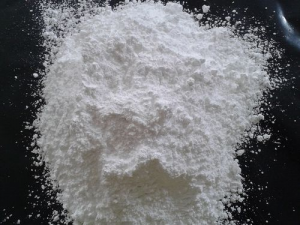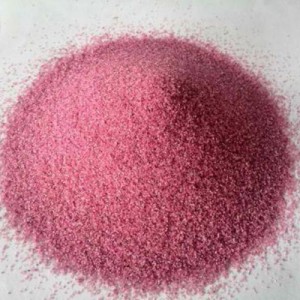Aluminium oxide
Properties: white solid insoluble in water, odorless, tasteless, very hard, easy to absorb moisture without delixing (burned moisture). Alumina is a typical amphoteric oxide (corundum is α-shaped and belongs to the densiest hexagonal packing, is an inert compound, slightly soluble in acid and alkali corrosion resistance [1]), soluble in inorganic acid and alkaline solutions, almost insoluble in water and non-polar organic solvents; Relative density (d204) 4.0; Melting point: 2050℃.
Storage: Keep sealed and dry.
Uses: Used as analytical reagent, organic solvent dehydration, adsorbent, organic reaction catalyst, abrasive, polishing agent, raw materials for smelting aluminum, refractory
Main ingredients
Alumina contains the elements aluminium and oxygen. If the bauxite raw materials through chemical treatment, remove the oxides of silicon, iron, titanium and other products are very pure alumina raw materials, Al2O3 content is generally more than 99%. The mineral phase is composed of 40% ~ 76% γ-Al2O3 and 24% ~ 60% α-Al2O3. γ-Al2O3 transforms into α-Al2O3 at 950 ~ 1200℃, with significant volume shrinkage.
aluminium oxide (aluminium oxide) is a kind of inorganic, chemical type Al2O3, is a kind of high hardness compounds, melting point of 2054℃, boiling point of 2980℃, ionized crystal at high temperature, often used in the manufacture of refractory materials.
Industrial alumina is prepared by bauxite (Al2O3·3H2O) and diaspore. For Al2O3 with high purity requirement, it is generally prepared by chemical method. Al2O3 has many homogenous heterocrystals, there are more than 10 known, there are mainly 3 crystal types, namely α-Al2O3, β-Al2O3, γ-Al2O3. Among them, the structure and properties are different, and the α-Al2O3 is almost completely transformed into α-al2o3 at high temperature above 1300℃.
Physical properties
InChI = 1 / Al 2 o/rAlO ₂ / c2-1-3
Molecular weight: 101.96
Melting point: 2054 ℃
Boiling point: 2980℃
True density: 3.97g /cm3
Loose packing density: 0.85 g/mL (325 mesh ~0) 0.9 g/mL (120 mesh ~325 mesh)
Crystal structure: hex tripartite system
Solubility: insoluble in water at room temperature
Electrical conductivity: No electrical conductivity at room temperature
Al₂O₃ is an ionic crystal
Alumina part use ---- artificial corundum
Corundum powder hardness can be used as abrasive, polishing powder, high temperature sintered alumina, called artificial corundum or artificial gemstone, can be made of mechanical bearings or watches in the diamond. Alumina is also used as high temperature refractory material, making refractory bricks, crucible, porcelain, artificial gems, alumina is also the raw material of aluminum smelting. Calcined aluminum hydroxide can produce γ-. Gamma-al ₂O₃ (due to its strong adsorption and catalytic activity) can be used as an adsorbent and a catalyst. The main component of corundum, alpha-al ₂O₃. A tripartite crystal in the shape of a barrel or cone. It has glass luster or diamond luster. The density is 3.9 ~ 4.1g/cm3, the hardness is 9, the melting point is 2000±15℃. Insoluble in water, and insoluble in acids and bases. High temperature resistance. Colorless transparent said white jade, containing trace of trivalent chromium red known as ruby; The blue color containing two -, three - or four - valent iron is called sapphire; Containing a small amount of ferric oxide dark gray, dark color called corundum powder. It can be used as bearings for precision instruments, diamonds for clocks, grinding wheels, polishes, refractories and electrical insulators. Brightly colored gemstones used for decoration. Synthetic ruby single crystal laser material. In addition to natural minerals, it can be made by hydrogen and oxygen flame melting aluminum hydroxide.
Alumina ceramic
Alumina is divided into calcined alumina and ordinary industrial alumina. Calcined alumina is an essential raw material for the production of antique bricks, while industrial alumina can be used for the production of microcrystalline stone. In traditional glazes, alumina is often used as whitening. The use of alumina is also increasing year by year as antique bricks and microcrystalline stones are favored by the market.
Therefore, alumina ceramics emerged in the ceramic industry -- alumina ceramics was a kind of ceramic material with Al₂O₃ as the main raw material and corundum as the main crystalline phase. Because of its high mechanical strength, high hardness, high frequency dielectric loss, high temperature insulation resistance, chemical corrosion resistance and good thermal conductivity and other advantages of excellent comprehensive technical performance.


















